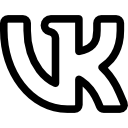questions included to test your knowledge that come from the Surgical Recall Book, SmartyPANCE Quizlet, A very distinction rated solution, Do not hesitate to buy or ask more about it, good luck my people. _______is the most important anesthetic complication. Anesthesia causes an uncontrolled increase in skeletal muscle oxidative metabolism, which overwhelms the body's capacity to supply oxygen, remove CO2, and regulative body temperature. - Malignant hyperthermia If patient is hyperkalemic (normal range 3.8-5.0), how should you treat the patient? - treat with glucose/insulin, and calcium /-bicarb _______is the reversing agent for opiods. - Naloxone _______is the reversing agent for benzodiazipines. - Flumazenil What is the best indicator used to monitor nutritional status? - prealbumin - every 2-3 days Intervention: _________require central access and indicated when no enteral feeding for 7 days. - TPN - total peripheral nutrition The _________is the most important part of the history before surgery. - cardiac history -- history of MI, unstable angina, valvular disease In patients with known cardiac disease, aggressive intraoperative lowering of myocardial oxygen demand with ____ has been shown in RCT's to improve outcomes and should be used. - beta blockers When accessing cardiac disease prior to surgery, what is the most important thing to access? - aortic stenosis -- crescendo diastolic rumble at apex Guidelines for the use of antibiotics include administration within _______ of surgery and redosing after 4 hours. What is the abx of choice? - 1 hour Abx of choice: cefazolin for all except colorectal then cefazolin/metronidazole Pre-op -- Metabolic disease/syndrome -- what are the 5 criteria? - 3/5 to diagnose: 1 - diabetes 2 - central obesity 3 - HTN 4 - high serum triglycerrides 5 - low HDL levels ______should be monitored before surgery bc it is a stimulant and vasoconstrictor -- can lead to severe tachycardia - Cocaine Pre-Op -- What are the indications for EKG and CXR? - EKG - men 40, women50, known CAD, DM, or HTN CXR - age 50, known cardiac or pulmonary disease What are the 5 classic "W's" of post operative fever? - W - wind (atelectasis) W - water (UTI) W - wound (wound infection) W - walking (DVT/thrombophlebitis) W - wonder drugs (drug fever) If the post op fever occurs within the first 24 hours of surgery, what is the most likely cause? - wind/atelectasis If the post op fever occurs within days 3-5 post op, what is the most likely cause? - water/UTI, catheter related phlebitis, pneumonia If the post op fever occurs within days 5-10 post op, what is the most likely cause? - wound infection, pneumonia, abscess, infected hematoma, C diff colitis, anastomotic leak, DVT, peritoneal abscess, drug fever, PE, parotitis _______is the most common pathogen in wound infections and around foreign bodies. - Staph aureus _______invades the inner ear and enteric tissues as well as the lung. - Klebsiella ______organisms are often found together with anaerobes. - Enteric organisms ie. enterobacteriaceae and enterococci Among the anaerobes, ___&___are often present in surgical infections and _____species are major pathogens in ischemic tissue. - Bacteroides & Peptostreptococci; Clostridium ___&___are usually nonpathogenic surface contaminants but may be opportunistic. Some fungi and yeast cause abscesses in sinus tracts. - Pseudomonas & Serratia History of recent surgery, trauma, cancer, prolonged immobilization, or oral contraceptive use increases the risk of ____. - DVT - deep vein thrombosis What is Homan's sign? - pain on passive dorsiflexion of ankle What is the test of choice for DVT? - doppler ultrasound How is the D-dimer text useful? - It is good at ruling a DVT out (if the text is negative) but not rule it in Tx of DVT -- 1. Initiate use of ____or____to what dose? 2. Overlap with the use of ____to what therapeutic range? 3. Why overlap therapies? - DVT 1. Initiate Heparin to PTT of 0.3-0.7 U/mL or LMWH wo monitoring. 2. Overlap with warfarin to INR between 2-3. 3. Overlap therapies to decrease changes of hypercoagulable state. The most common cause of SIRS (systemic inflammatory response syndrome) is sepsis. What are the criteria for dx of SIRS? - At least 2 of the following: 1. temp 38C or 36C 2. tachy 90 3. tachypnea 20 breaths/minute 4. PCO2 32mmHg 5. WBC 12,000/uL or 4000/uL After sepsis, what are the next two most common causes of SIRS? - pancreatitis and drugs What is the difference between hypovolemia and dehydration? - hypovolemia is loss of both water and sodium while dehydration is loss of intracellular water or deficit with hypernatremia -- dehydration occurs when patient can not adjust water intake for water loss What are the clinical signs of dehydration and hypovolemia? - tachycardia, hypotension, pale skin, increased capillary refill time, dizziness, faintness, nausea, thirst, decreased urine output -- in hypovolemia, urine will demonstrate low sodium concentration What are 2 common conditions with dehydration? - diabetes insipidus (lack of ADH or unable to respond to ADH), fever with increased water loss Hyponatremia Causes _______ cirrhosis, CHF, nephrotic syndrome, massive edema _______ states of severe pain or nausea, trauma, brain damage, SIADH _______ prolonged vomiting, decreased oral intake, severe diarrhea, diuretic use Misc causes factitious hyponatremia, hypothyroidism, adrenal insufficiency, malnourished states, primary polydipsia - Hypervolemic, Euvolemic, Hypovolemic What are the two most common treatments for hyponatremia? Other less common treatment? - salt tabs and fluid restriction; vasopressin receptor antagonist in SIADH, CHF, and cirrhosis Hypernatremia is almost always due to _______. Therefore, what is the treatment? - dehydration; rehydrate! What s/s can result in a hyperkalemic patient? - cardiac arrhythmias (tall peaked T waves) and weakness If the potassium level is above 6meq/L or the patient has EKG changes, what treatments can lower K temporarily? - calcium gluconate, sodium bicarbonate, insulin and glucose, kayexalate (takes longer to be effective) ______&______ is extremely effective in decreasing potassium. - Dialysis and furosemide Hypokalemia is usually due to ________, hypomagnesemia, alkalosis, high aldosterone levels. How is it treated? - potassium loss; replacement must be slow!!! Mild loss: oral KCl supplements or K containing foods Severe loss: IV supplementation - rate 10mEg/hr Causes of ________are VITAMIN D METABOLIC DISORDERS, abnormal PTH function, primary hyperparathyroidism, Lithium, malignancy, disorders related to high bone turnover rates (hyperthyroidism, prolonged immobilization, thiazide use, vit A intoxication, Pagets dz of bone, multiple myeloma), renal failure - hypercalcemia How should hypercalcemia be treated? - fluid and diuretics, bisphosphonates, and calcitonin _______is usually caused by ineffective PTH (chronic renal failure, absent active vit D, ineffective active vit D, pseudohypoparathyroidism), deficient PTH. - Hypocalcemia How should hypocalcemia be treated? - intravenous calcium gluconate, Tums Increased CO2, hypoventilation, or decreased pH is aka ___. - respiratory acidosis Decreased CO2, hyperventilation, or increased pH is aka ___. - respiratory alkalosis Increased H or HCO3 loss, DKA, lactic acidosis is aka ___. - metabolic acidosis Loss of H is aka ________. - metabolic alkalosis The d/d of post op ___________can be MI, atelectasis, pneumonia, pleurisy, esophageal reflux, PE, musculoskeletal pain, subphrenic abscess, aortic dissection, pneumo/chyle/hemothorax, or gastritis. - chest pain Who classically gets silent MI's? - diabetics How should syncope be initially evaluated? - It is important to distinguish syncope from cardiac arrest from other nonsyncopal conditions causing LOC Syncope d/d: Prodrome or aura usually associated with ____. - seizures (as is loss of continence) Cardiac syncope's onset is usually ____without a prodrome. Monitor vitals regularly, EKG, orthostatic challenge, neuro exam etc. - sudden In a surgery patient with dyspnea on exertion, what should be ruled out? - PE or pneumothorax What are some chronic dyspnea on exertion causes? - asthma, COPD, interstitial lung disease, myocardial dysfunction, obesity What are some acute dyspnea on exertion causes? - angioedema, anaphylaxis, foreign objects, airway trauma, pulmonary infection, pleural effusion, peritonitis/ruptured viscous, bowel obstruction __________is pain, cramping, or both of the lower extremity (usually calf muscle) after walking a specific distance; then resolves for a specific amount of time while standing. - Claudication What is claudication associated with? - peripheral vascular occlusion D/D of lower extremity claudication? - neurogenic/nerve entrapment/discs, arthritis, coartation of the aorta, popliteal artery syndrome, neuromas, anemia, diabetic neuropathy pain A _________is an abnormal dilation of an artery. Involve all layers of the arterial wall. - aneurysm At what size is surgical repair of aneurysm recommended? - 5.5 cm 95% of aneurysms are associated with ___________. - atheroschlerosis -- other causes are trauma, infection, syphilis, & Marfan's syndrome What is the classic triad of s/s related to ruptured AAA? - abdominal pain, pulsatile abdominal mass, hypotension Where does the aorta bifurcate? - At the level of umbilicus Because the ________is often sacrificed during AAA repair, colonic ischemia can occur. - IMA - inferior mesenteric artery _______is a separation of the walls of the aorta from an intimal tear and disease of the tunica media; a false lumen is formed and a "reentry" tear may occur, resulting in a "double barrel" aorta. - Aortic dissection Explain the DeBakey classifications (Type 1,2, & 3) of aortic dissections. - DeBakey Type 1 - ascending & descending aorta DeBakey Type 2 - ascending aorta DeBakey Type 3 - descending aorta Explain the Stanford classifications of aortic dissections. - Type A -- ascending /- descending aorta Type B - descending aorta What is the most common cause of aortic dissection. - HTN! What are the s/s of aortic dissection. - abrupt tearing pain/sensation What are 3 other sequelae of aorta dissection? - cardiac tamponade, aortic insufficiency, aortic arterial branch occlusion/shearing What is Beck's triad of cardiac tamponade? - muffled heart sounds, JVD, hypotension What does CXR show with aortic dissection? - widened mediastinum What is the gold standard but time consuming test of choice with aortic dissection/aneurysm? - aortagraphy Which type of aortic dissection should be treated with surgical repair? - Involvement of ascending aorta -- Type A or Type I Type III or B aortic dissections can be treated with what meds? - blood pressure meds _______is a diffuse disease process in arteries; artheromas containing cholesterol and lipid form within the intima and inner media, often accompanied by ulcerations and smooth muscle hyperplasia. Risk factors: HTN, smoking, DM, FH, hypercholesterolemia, high LDL, obesity, & sedentary lifestyle. - Atherosclerosis Common sites of arterial plaque formation? - branch points (carotid bifurcation) or tethered sites (superficial femoral artery in Hunter's canal of leg) What is a major principle of safe vascular surgery? - get proximal and distal control of vessel so that if you put tension on the vessel loop it will occlude the vessel What is Virchow's Triad (risk factors for thrombosis)? - stasis, abnormal endothelium, hypercoagulability What are the 6 classic s/s of acute arterial occlusion? - pain, paralysis, pallor, paresthesia, poikilothermia, pulselessness What is the immediate pre-op management of acute arterial occlusion? - anticoagulation with IV heparin -- angiogram 85% of emboli originate from where? - Heart -- a fib What is the most common site of arterial occlusion by embolus? - SFA -- superficial femoral artery What is the surgical treatment for acute arterial occlusion? - surgical embolectomy Post op management of possible _________ie. tissue swelling from reperfusion can increase intracompartmental pressure, resulting in decreased capillary flow, ischemia, and myonecrosis. - compartment syndrome What are the classic s/s of compartment syndrome? - pain, paralysis, parethesias, pallor What is the tx for compartment syndrome? - fasciotomy ________is intermittent claudication. S/S are absent pulses, bruits, muscular atrophy, decreased hair growth, thick toenails, and tissue necrosis/ulcers/infection. - PVD - peripheral vascular disease ______is the gold standard for diagnosis of PVD. - arteriogram Use Ankle to Brachial index to access PVD. What is the normal ABI. - ABI1; Claudicator ABI0.6; Rest Pain ABI0.4 What are the indications for treatment of PVD? STIR - S - severe claudication that is refractory to conservative tx T - tissue necrosis I - infection R - rest pain What is the major post op concern after PVD operation? - cardiac status -- MI is the most common cause of post op death The three treatment options for _______are surgical graft bypass, angioplasty, endarterectomy. - PAD Arterial/venous ulcer disease is best treated with revascularization. An expensive alternative is ______ which stimulates angiogenesis. When revascularization is not possible, ______ is performed. - hyperbaric oxygen; amputation __________most often occur in saphenous veins and are caused by incompetent valves from damage or venous dilation, AV fistula, congenital venous malformations. - Varicose veins What are some treatment options for varicose veins? - compression stockings, leg elevation, venous ablation, sclerotherapy, great saphenous vein stripping ___________is obstruction of left subclavian artery. S/S: upper extremity claudication and upper extremity blood pressure discrepancy. Tx: surgical bypass or endovascular stent - Subclavian steal syndrome _________is stenosis of renal artery which results in decreased perfusion of the juxtaglomerular apparatus and subsequent activation of the renin-angiotensin-aldosterone system. S/S - diastolic HTN, A-gram is diagnostic. - Renal artery stenosis _________is a vasospasm of the digital arteries with color changes of the digits. Usually initiated by cold or emotion. - Raynaud's phenomenon ________is arteritis of the aorta and aortic branches resulting in stenosis/occlusion/aneurysms. - Takayasu's arteritis _________aka thromboangiitis obliterans; occlusion of vessels of hands and feet. Seen in young MEN WHO SMOKE. - Buerger's disease Anemia is evaluated by measuring ________. - MCV - mean corpuscular volume MCV 100 is aka ____. MCV 80-100 is aka ___. MCV 80 is aka ___. - MCV 100 is macrocytic. MCV 80-100 is normocytic. MCV 80 is microcytic. What are the most common causes of macrocytic, normocytic, and microcytic anema? - Macrocytic -- B12 def, folate def, EtOH, HIV drugs Normocytic -- anemia of chronic disease Microcytic -- GI loss, menstruation The normal Hemoglobin for an adult male and female is: The normal Hematocrit for an adult male and female is: - Hemoglobin - male 13.5-17.5 female 12-16 Hematocrit - male & female ~40% The d/d for ________is gastric cancer, gastroenteritis, influenza, pneumonia, infectious disease illness. - anorexia The d/d for ________is gastric cancer, bowel obstruction, increased intracranial pressure, pregnancy, migraine, IBS, malignancy, appendicitis, cholecystitis, cholelithiasis, PUD, UTI... - nausea/vomiting The d/d for ____is jaundice of newborn, hyperbilirubinemia, cholelithiasis, small bowel adenocarcinoma, pancreatic carcinoma, pancreatic pseudocyst. - jaundice The d/d for _____is upper GI bleed, esophageal or gastric varices, gastritis, malignancy etc. - hematemesis The d/d for ________infectious pathology, colorectal carcinoma, bowel obstruction, diverticular disease, volvulus, dietary. - diarrhea, constipation, opstipation The d/d for ________is diverticulosis, diverticulitis, colon polyps, colorectal carcinoma, UC, Chron's, cancer, hemorrhoids. - melena, hematochezia The d/d of ________is hiatal hernia, GERD, PUD, Barrett's, cholecystitis. - heartburn, dyspepsia What are some causative agents of esophageal strictures? - GERD, iatrogenic, long term NG tubes, caustic agents Treat shallow esophageal ulcers with _______, and use ____for moderate or deep ulcers. Upper GI at 10-14 days. - corticosteroids, antibiotics If an esophageal stricture develops, treat with what? What about in severe cases? - dilation with Maloney dilator or balloon catheter. In severe cases, esophagectomy with colon interposition or gastric pull up After esophageal stricture, because of risk of esophageal squamous cancer, what should be done to screen more regularly (every other year)? - endoscopies _________is the most common type of esophageal cancer at the GE junction in the US. - Adenocarcinoma ________is the most common type of esophageal cancer worldwide. - squamous cell carcinoma What are the 5 factors related to esophageal cancer? - tobacco, alcohol, GE reflux, barrett's esophagus, radiation Esophageal cancer is most common in what sex, age, ethnicity? - 60s, male, black Treatment of _______with esophagectomy with gastric pull up or colon interposition. - esophageal cancer ________is reflux of gastric contents into lower esophagus resulting from decreased fx of LES. - Esophageal reflux Some causes of _______are decrease LES tone, decreased esophageal motility, hiatal hernia, gastric outlet obstruction, and NG tube. - esophageal reflux Complications of esophageal reflux requiring surgery: - failure of medical therapy, esophageal strictures, progressive pulmonary insufficiency secondary to documented nocturnal aspiration, barrett's esophagus Barrett's esophagus is replacement of lower esophageal squamous epithelium with columnar epithelium secondary to reflux. This is a ________malformation. - pre-malignant ________is the most common esophageal diverticulum. - Zenker's diverticulum What are the s/s of Zenker's diverticulum? Dx is made via ____. - dysphagia, neck mass, halitosis, food regurgitation, heart burn; barium swallow What are the two treatment options for Zenker's diverticulum? - diverticulectomy; cricopharyngeus myotomy if 2cm __________is the failure of the LES to relax during swallowing, loss of esophageal peristalsis. - Achalasia What is the most common s/s of achalasia? What is the worst? - Solid & liquid dysphagia; liquids are worse What is the diagnostic study of choice for achalasia? - manometry -- it shows failure of LES to relax during swallowing and increased pressure at LES What is the surgical treatment of achalasia? - LES balloon dilation, tx of reflux, partial fundoplication, myotomy of the lower esophagus and LES _______is strong nonperistaltic contractions of the esophageal body; sphincter function usually normal. Sx are spontaneous chest pain that radiates to the back, ears, neck, jaw, or arms. An UGI series shows what? - Esophageal spasm; "corkscrew esophagus" _______is aka hypertensive peristalsis. Very strong peristalstic waves that cause radiating chest pain to the back, ears, neck, jaw, or arms. - Nutcracker esophagus A ________is when the stomach herniates through the hiatus of diaphragm into the chest. Results from continued shortening of the esophagus as a result of repeated muscle contraction. - hiatal hernia Hiatal hernia repair involves cutting ______&______ circumferentially around the esophagus as far into the chest as possible to free esophagus and all it to be pulled back into the abdomen. Suture wall of hernia closed. - lymphatics and vessels Peptic ulcer disease can be from gastric or duodenal ulcers. What is an easy way to distinguish the two? - duodenal ulcer pain is usually relieved with food intake What is a common cause of PUD? - H pylori How is H pylori treated? M.O.C. or A.O.C - 2 week antibiotic regimen MOC metronidazole, omeprazole, clarithromycin AOC ampicillin, omeprazole, clarithromybin ________sign is RLQ/peritonitis as a result of succus collecting from a perforated peptic ulcer - Valentino's sign What are some risk factors for gastric cancer? - poor environment (smoked meats, high nitrates, low fruits & veggies), male, blood type A, previous partial gastrectomy, H pylori, pernicious anemia What are the symptoms of gastric cancer? WEAPON - Weight loss, Emesis, Anorexia, Pain/epigastric discomfort, Obstruction, Nausea Gastric Metastases: ____is metastatic gastric cancer to nodes in the left supraclavicular fossa ____is periumbilical lymph node gastric cancer metastases; presents as umbilical mass ____gastric cancer (or other adenocarcinoma) that has metastasized to ovary - Virchow's node; Sister mary josephs sign, Krukenbergs tumor The treatment of gastric cancer is with what? - surgical resection with wide margins and lymph node dissection ~~ 5 year survival rate 25-50% ~~ _______is hypertrophy of the smooth muscle of the pylorus, resulting in obstruction of outflow. Who is affected most commonly? - Pyloric stenosis; 1st born males What is the s/s of pyloric stenosis? What shaped abdominal mass is seen in 85%? - progressive projectile vomiting (non bilious); olive in epigastric region -- also hypokalemic hypochloremic metabolic alkalosis If the u/s is nondiagnostic of pyloric stenosis, then barium swallow shows what? - "string sign" or "double railroad track sign" What is the initial treatment of pyloric stenosis? Surgical treatment? - hydration and correction of alkalosis; Fredet-Ramstedt pyloromyotomy (division of circular muscle fibers without entering the lumen/mucosa) _______is biliary colic (temporary pain w no fever), n/v, dyspepsia (intolerance to fatty foods, flatulence, belching, indigestion) that continues over time - Chronic cholecystitis _____is constant RUQ abdominal pain 6 hours, fever (101), n/v, referred right subscapular pain, referred epigastric discomfort. - Acute cholecystitis ________is acute pain and inspiratory arrest excited by palpation of the RUQ during inspiration. - positive Murphy's sign What are some complications of cholecystitis? - abscess, perforation, choledocholithiasis, cholecystenteric fistula formation, gallstone illeus What is the test of choice for cholecystitis? - u/s -- then HIDA scan What labs are often elevated with cholecystitis? Choledocholithiasis? Cholangitis? Gallstone pancreatitis? - cholecystitis: increased WBC and minor LFT abnormalities Choledocholithiasis: increased bilirubin & alkaline phosphatase Cholangitis: elevated serum bilirubin and transaminase levels, as well as leukocytosis Gallstone pancreatitis: elevations in serum amylase and lipase Gallstones (cholelithiasis) increase with age and in what specific population? - Fat, Female, Forty, Fertile Biliary colic that lasts longer than 6 hours is often ____. - cholelithiasis 15% of stones pass through the cystic duct and enter the common bile duct. Patient presents with RUQ abdominal pain, jaundice, light colored stools, and tea colored urine. This is aka ____. - choledocholithiasis In choledocholithiasis, what study can be used to extract the stones? - ERCP - endoscopic retrograde choloangeopancreatography _________is infection of the biliary tract. - Cholangitis What is Charcot's triad? - fever with chills, RUQ abdominal pain, jaundice What is Reynold's Pentad? - Charcot's triad, hypotension, altered mental status What are some common causes of cholangitis? - choledocholithiasis, stricture, neoplasm (usually ampullary carcinoma), extrinsic compression (pancreatic pseudocyst/pancreatitis), instrumentation of the bile ducts, biliary stent What are the most common causative organisms of cholangitis? - gram negative - E Coli, Klebsiella, Pseudomonas, Enterobacter, Proteus, Serratia. Enterococci are the most common gram positive bacteria Anaerobes are less common The treatment of ________is with stone extraction and/or decompression, laparotomy with T tube placement, NPO, IVF, broad spectrum abx. - cholangitis _________is a SBO from a large gallstone that has eroded through the gallbladder and into the duodenum/small bowel. Tx: removal of stone w possible cholecystectomy. - Gallstone illeus Most gallstone carcinomas are ________(type of cancer.) - adenocarcinoma _______is malignancy of the extrahepatic or intrahepatic ducts -- primary bile duct cancer. Management is whipple procedure. - Cholangiocarcinoma _______is a calcified gallbladder. Removal required bc of strong association with gallbladder cancer. - Porcelain gallbladder _______of the gallbladder is complete obstruction of the cystic duct by gallstone and filling of the gallbladder with fluid. - Hydrops ________is inborn error in liver bilirubin uptake and glucuronyl transferase resulting in hyperbilirubinemia. - Gilbert's syndrome _________is a palpable, NONTENDER gallbladder. Associated with cancer on head of pancreas. - Courvoisier's gallbladder ______is common hepatic duct obstruction as a result of extrinsic obstruction from gallstone impacted in the cystic duct. - Mirizzi's syndrome ______carcinoma is the most common primary malignancy of the liver -- accounts for 80% of all primary malignant liver tumors - Hepatocellular carcinoma - can either be nonlamellar or lamellar Some associated risk factors of hepatocellular carcinoma are ___, ___, or ___. - Hep B virus, aflatoxin, or cirrhosis S/S of hepatocellular carcinoma are: - dull RUQ pain, hepatomegaly (classic: pain), abdominal mass, weight loss, portal HTN, ascites, jaundice, fever, splenomegaly Most is the most common site of liver metastases? - lungs ____is a serious and painful condition in which pancreatic enzymes, which help digest fats/sugars, overreact and begin to digest the pancreatic tissue itself. - Pancreatitis What are s/s of pancreatitis? - non-crampy epigastric pain, variable character, radiation to LUQ/RUQ or back, pain alleviated by sitting or standing, n/v What is the most common cause of pancreatitis? - alcoholism (others are high triglycerides, gallstones) In pancreatitis, the patient may present with fever, tachycardia, upper abdominal tenderness, and absent bowel sounds. Is amylase or lipase more specific for pancreatitis? - lipase What is the study of choice for pancreatitis? - CT scan A ____is a collection of tissue & fluids that forms on the pancreas, that is not surrounded with epithelial capsule like a true cyst would be. Usually the result of pancreatitis. Less likely to be cancerous that a true cyst. - pancreatic pseudocyst A pancreatic pseudocyst is only dangerous if what happens? - if it ruptures -- can present without symptoms or may cause hematemesis, fainting, weak and rapid heartbeat, abdominal pain What are two treatments for a pancreatic pseudocyst? - pancreatic rest (NPO), surgical drainage Pancreatic ____ are sac-like pockets of fluid on or within your pancreas. May have no symptoms or persistant abdominal pain that may radiate to the back. - cysts ___________is the 4th leading cause of cancer deaths in the US. - Pancreatic carcinoma Risk factors of pancreatic carcinoma - alcohol 4/day, obesity, BRCA gene, DMII, FH, tobacco use ____of pancreatic ductal epithelium is most common type of cancer. Usually in the head of the pancreas. What is the most common presentation of pancreatic carcinoma? - Adenocarcinoma; painless jaundice -- others are unexplained weight loss, n/v, anorexia, early satiety, weakness, epigastric pain radiating to back, recurring superficial thrombophlebitis _________sign is a non tender but distended palpable gallbladder, associated with jaundice. - Couvoisier's sign What pancreatic location is most common for carcinoma. - Head of pancreas. The surgery for pancreatic carcinoma is a ____procedure. Explain. - Whipple ie. pancreaticoduadunectomy. Resection of pancreatic head, gallbladder, common bile duct, second part of duodenum, distal stomach. The appendix has an immune function in adults. Explain. - the lymphoid tissue in the appendix assists with maturation of the B lymphocytes and in the production of immunoglobin A antibodies The appendix is like Peyer's patches in other areas in that it... - takes up antigens from the intestines and reacts to these contents Why is it not recommended NOT to routinely remove the appendix? - because it can be used as a backup for failing organs (urinary bladder or possible ureters) CONTINUES
No review has been posted for this item yet
 Cookies!
Cookies!









